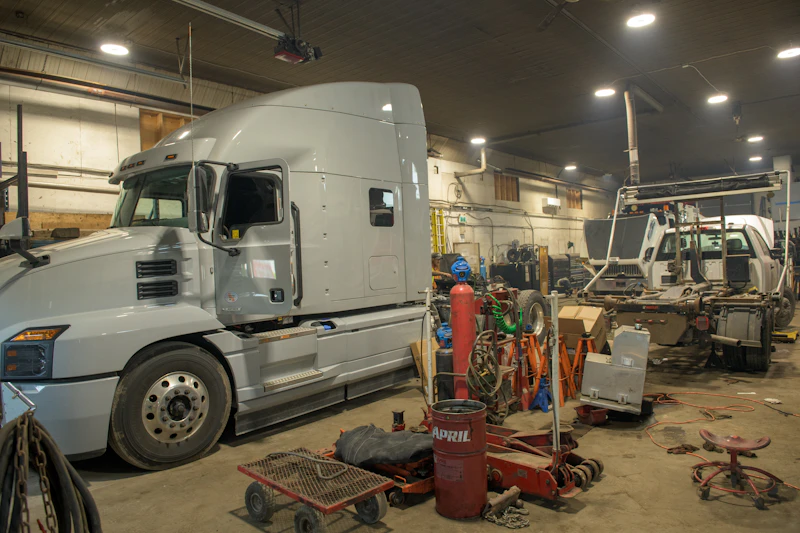Keeping Your Diesel Pusher's Electrical System Road-Ready

Your diesel pusher’s electrical systems power a range of functions. From essential components that keep your engine moving to the entertainment systems you use to unwind after a long day driving. Like all systems within your home on wheels, though, these can fall victim to a range of issues.
That’s why we’ve put together this handy guide, giving you all the tips to keep your diesel pusher’s electrical system healthy.
Understanding Your Electrical System
The Battery
Your battery is the starting point for all electrical operations in your diesel pusher. Without it, your engine won’t even start. It powers the starter motor, the fuel injectors, and the glow plugs, which are essential for getting the engine up and running.
The battery also provides power to the lights, controls, and other electronics when the engine is off. Over time, batteries degrade and lose their ability to hold a charge, which, if not checked before each trip, can leave you standard by the side of the road.
Pro Tip: Regularly check your battery terminals for corrosion and ensure tight connections. A loose or corroded connection can cause electrical malfunctions or even prevent your motorhome from starting.
The Alternator: Keeping the Juice Flowing
Once the engine runs, the alternator generates electricity to recharge the battery and power the vehicle's electrical systems. The alternator is driven by a serpentine belt connected to the engine. This belt converts mechanical energy into electrical energy, ensuring the battery stays charged, and the electrical systems function properly while driving.
Pro Tip: If your alternator fails, the battery will eventually drain, leaving you without power. Watch for signs like dimming lights, a dead battery, or a warning light on your dashboard, as these could indicate alternator problems.
Preventive Maintenance
The best way to deal with electrical issues is to avoid them altogether. This is where preventive maintenance comes in. Be sure to focus on the following areas.
Regular Battery Checks
Start by testing the battery voltage regularly with a multimeter, especially before long trips. A fully charged battery should read around 12.6 volts or higher when the engine is off. If it’s significantly lower, it may be time for a replacement.
Also, keep an eye out for bulging or leaking, which are sure signs that the battery needs to be replaced immediately.
Alternator Inspection
Your alternator should be checked during routine maintenance for proper operation. Professional diesel pusher mechanics can perform a load test to ensure it’s generating the correct voltage. When the engine is running, the typical range should be between 13.8 and 14.4 volts.
Serpentine Belt Inspection
The serpentine belt that drives your alternator should be inspected for wear and tension. A worn or loose belt can slip, causing the alternator to underperform. Replace the belt if it shows signs of cracking, fraying, or glazing.
Wiring and Connections
Inspect all wiring and connections for wear, corrosion, or looseness. Pay special attention to the battery cables and the alternator and starter motor connections. Damaged or corroded wires can lead to poor electrical performance and fire hazards.
Troubleshooting Common Electrical Issues
Even with regular maintenance, electrical issues can still pop up. Here are some common problems and how to troubleshoot them:
Dim or Flickering Lights
Dim or flickering lights often indicate a weak battery or failing alternator. Start by checking the battery voltage. If the voltage is low, try charging the battery. Test the alternator to see if the lights still flicker after a full charge.
Dead Battery
If your battery frequently dies, it could be due to a parasitic draw (something draining the battery when the vehicle is off). Common culprits include aftermarket electronics or a faulty alternator. Using a multimeter to check for draws isolates the problem by pulling fuses.
No Crank, No Start
Check the battery and starter motor connections first to see if your motorhome won’t crank or start. If they’re fine, the issue could be a faulty starter motor or a failing ignition switch.
Warning Lights on the Dash
Modern motorhomes are equipped with warning lights to alert you to electrical problems. If a warning light comes on, don’t ignore it. It could indicate anything from a low battery to a failing alternator. Use an OBD-II scanner to read the error codes, or take the vehicle to a professional for diagnosis.
Conclusion
Keeping your diesel pusher’s electrical system road-ready requires regular maintenance and prompt attention to any issues that arise. By monitoring battery health, alternator performance, and overall electrical integrity, you can avoid unexpected breakdowns and keep your motorhome running smoothly.
Whether you’re a seasoned road warrior or new to the world of diesel pushers, a little preventative care can go a long way in ensuring that your rig stays road-ready. So, the next time you’re preparing for a trip, give your electrical system the attention it deserves—your peace of mind depends on it.


.webp)
.webp)